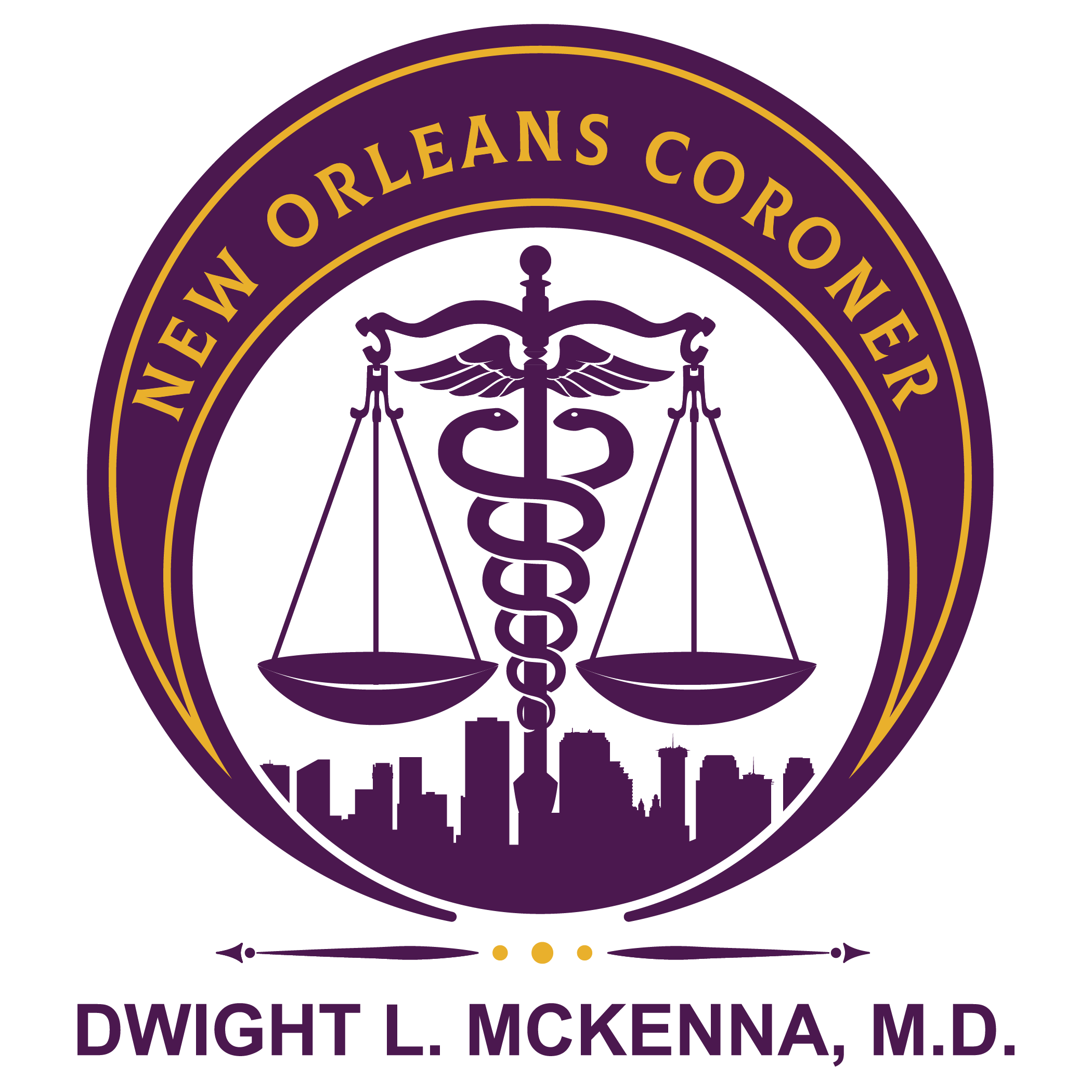Homicides and Accidental Drug Deaths
New Orleans, La – New Orleans Coroner Dr. Dwight McKenna was a guest speaker at the Drug Enforcement Agency New Orleans Field Division’s Management Training Conference, June 19th at Keesler Air Force Base in Biloxi, Mississippi.
Dr. McKenna addressed the issue of opioid abuse, violence, overdoses and community trends to approximately 60 regional DEA managers from Alabama, Arkansas, Louisiana and Mississippi.
Dr. McKenna shared the following statistics based on 2017 data collected by the Coroner’s Office:
Coroner’s Report on 2017 Accidental Drug-Related Deaths in New Orleans
- In New Orleans, there were 219 accidental drug-related deaths in 2017, as compared to 211 in 2016 and 92 in 2015.
- Toxicological analysis in the majority of drug-related deaths revealed the presence of multiple drugs.
- In 2017, opiates were discovered in 166 drug-related deaths, as compared to the same figure (166) in 2016 and 81 in 2015.
- Within this group of accidental opiate-related deaths in New Orleans, 87 persons died accidentally with fentanyl in their system, as compared to 48 in 2016 and 13 in 2015.
- Cocaine was present in 116 accidental drug-related deaths in 2017, as compared to 105 in 2016 and 34 in 2015.
- Methamphetamines/amphetamines were present in 14 accidental drug-related deaths in 2017, as compared to 18 in 2016 and 4 in 2015.
- No significant change was seen in gender distribution between the years, with males representing 79% of the drug-related deaths in 2017.
- Compared to 2015 and 2016, the majority of persons who died of accidental drug-related causes were African American — African-Americans represented 52% of drug-related deaths in 2017, compared to 45% in 2016 and 28% in 2014.
The statistics for accidental drug-related deaths as shown above are astounding, according to Dr. McKenna. Dr. McKenna also pulled statistics on the homicides in 2017 to see how many are dying with these very same drugs in their systems. The accidental drug-related death rate in our city is the highest that it has ever been, outnumbering the homicide rate. It is very important to also know how these same drugs are being used by the same people that are also being killed on our streets by violence. These drugs, as this data suggests, are most likely the number one cause of all the violence we are having on our streets which is the number one cause of all of our homicides; thus really showing everyone how much of a major problem drug use is affecting the lives of our people.
New Orleans 2017 homicide numbers, number of homicides with drugs in their system and the type of drugs.
- 164 people have died due to homicide in 2017 in New Orleans.
- Out of the 164 homicides 62 had some type of Opioid/Opiate types of drugs in their systems.
- 8 of our homicides that had Opiates had 6-Mam which is the indicator/metabolite for heroin.
- 6 of these heroin deaths had Fentanyl.
- 9 of the homicides had Fentanyl but only three of them only had Fentanyl with no heroin that showed up.
- 20 of our homicides had Benzodiazepines which are drugs like lorazepam, Clonazepam, alprazolam, which are known on the streets as Xanax, Zan-Bars or Valiums.
- 20 of our homicides had methamphetamines/amphetamines.
- 32 of our homicides had cocaine.
- 20 of our homicides had ETOH which is alcohol.
- 87 of our homicides had THC.
- 29 of our homicides had Tramadol which is the new synthetic Opioid known as an opiate based pain medication.
Tramadol is the new drug on the street. Why it’s Dangerous.
- According to researchers, Americans consume 80 percent of the world’s supply of painkillers, and prescriptions have increased by 600 percent over the last decade. Both tramadol and hydromorphone (Dilaudid®), a common opioid painkiller, acts similarly upon the nervous system.
- Tramadol affects the opioid receptors in the brain differently because studies have shown that when blockers are used in addicts to stop the effects on opioids the blockers are not blocking the effects of Tramadol allowing the person to enjoy the feeling they get with opioids making them want them just as much.
